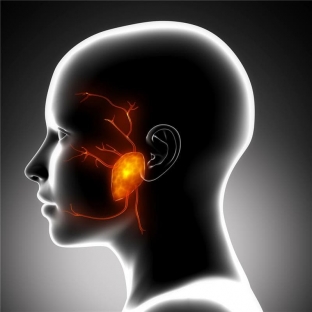Tumors of the salivary glands are among the most frequently diagnosed neoplasms, including malignant ones. This is a very insidious type of tumors that can recur, prone to rapid growth and malignancy, metastasis. Most often, tumors of the salivary glands are diagnosed in women over the age of 40 years. In addition, women working in hairdressing and beauty salons are especially at risk of developing such tumors, which experts explain by inhaling paints, chemicals, and acid-containing cosmetics.
Why do salivary gland tumors develop
Despite the significant research material accumulated on the causes of the development of tumors of the salivary glands, the causes of their development are still not completely clear. However, there are many well-founded assumptions about the factors that can provoke the development of the disease:
- neck injuries in the area of salivary glands or inflammatory diseases with their defeat – not a very significant factor, since injuries and diseases like mumps are not always mentioned in the anamnesis of patients with a tumor of the salivary glands;
- congenital pathologies and gene mutations;
- damage to the salivary glands by herpes virus infection;
- smoking, unfavorable environment, working with chemicals;
- hormonal disorders;
- excessive sun exposure;
- iodine therapy for hyperthyroidism;
- frequent x-rays of the neck.
Some experts speculate about such additional provoking factors as poor nutrition with a lack of fresh fruits and vegetables in the diet. Of course, at risk for tumors of the salivary glands are workers in construction, chemical, woodworking and other industries where work is associated with frequent inhalation of dust, heavy metal elements.

How salivary gland tumors are classified
Tumors of the salivary glands are usually divided into three large groups – benign, malignant and intermediate or locally destructive.
Benign tumors of the salivary glands, in turn, are classified into epithelial and connective tissue. Epithelial include adenolymphoma and adenoma, and connective tissue – formations like lipomas, fibroids, chondromas. Adenomas grow slowly over many years, do not hurt, can grow so large that they cause facial asymmetry, and often recur after removal. Connective tissue tumors of the salivary glands are less common, usually affect the parotid glands, can cause trismus, otalgia.
Locally destructive tumors include cylindromas, mucoepithelial tumors of the salivary glands. They usually affect the parotid and minor salivary glands, develop slowly, but under certain conditions they can suddenly acquire malignant features – rapid invasive growth and metastasis.
Malignant tumors of the salivary glands are carcinomas and sarcomas, which can arise primarily or be transformed from other tumors secondarily, in the process of malignancy. Outwardly, they are distinguished by hyperemic ulcerated skin over the tumor, they grow rapidly and penetrate soft tissues, cause pain, often paresis of the facial nerve, and contracture of the masticatory muscles.
The treatment of salivary gland tumors is always surgical, regardless of their nature, they should be removed. Given the proximity of the facial nerve, the operation needs careful preparation and control in order to prevent complications in the form of mimic muscle paralysis. A benign tumor after removal must be sent for histological examination in order to clarify its nature and the adequacy of the volume of the operation performed. Radiation therapy is performed before removal of a malignant tumor.
The prognosis for the treatment of benign tumors of the salivary glands is favorable, although relapses are not uncommon. With regard to malignant formations – it all depends on the location of the tumor and the timeliness of the treatment started.









Add a comment